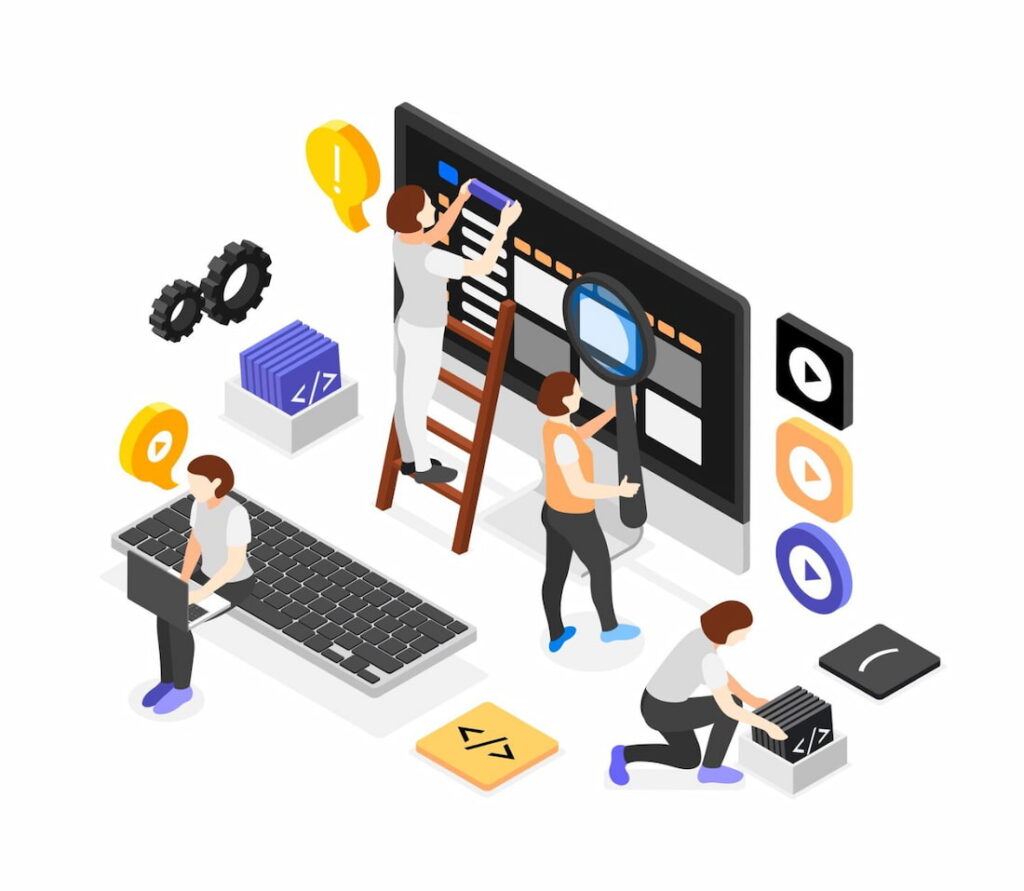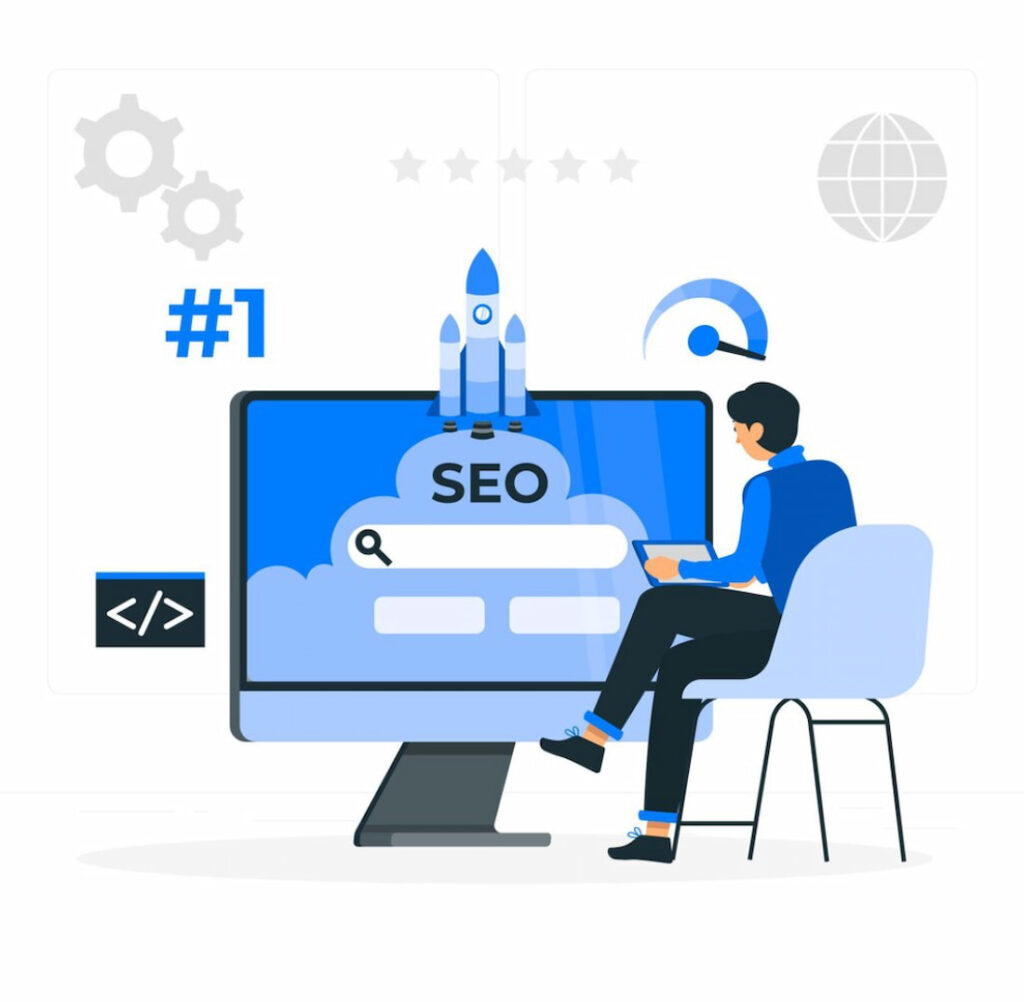Gone are the days when you would have to go to a store physically to buy a product as websites have become the new storefronts. Whether you’re a budding entrepreneur, a creative soul, or an established business seeking a powerful online presence, the art of website creation is the key to unlocking the doors of the virtual world.
Let’s dive into the world where pixels meet purpose and imagination finds its virtual home.
Introduction to Website Creation
Let’s explore what a digital canvas is and how websites are important.
Understanding the Digital Canvas
You can imagine creating a website like painting on a digital canvas where you combine code and functionality to form an attractive design to boost the user experience.
Digital canvas helps us understand how a website is created, such as the code used by a website developer or the templates when designing and creating a website with a website builder.
HTML, CSS, and Javascript are the most widely used languages for writing code. CSS is the one which is used in the designing phase to make the website look more interactive. With recent developments over the years, website builders are now used, so individuals who lack technical expertise can also design the website however they want without involving any coder or developer.

The Evolution and Importance of Websites
In the early days, websites started as simple pages with white backgrounds providing basic information for specific topics without any interaction. But, this has been completely changed with the eCommerce boom and online business presence.
Purchase decisions are often related to how the website looks as it is the first interaction between the seller and buyer. With eCommerce rising, business owners have realized that an online presence is a must to capture a larger audience.
Moreover, you can reach global audiences easily through websites and sell your products to people from other countries without even moving an inch away from your laptop desk.
Overview of Website Creation Methods
Websites can be created with multiple following methods:
DIY vs. Professional Development
DIY(Do it Yourself) are website builders that are great for beginners who can just drag and drop the functionalities or whatever they want to create an attractive website. They can customize the website by trying different layouts and can add unique features without the need for any prior coding knowledge.
Additionally, you can also create a website by hiring a professional development agency. They will use their expertise in coding to fulfill your requirements as soon as possible which is great for projects with complex structures.
From Templates to Custom Coding
Not every business owner is a coder so a template becomes a great way for them to get started without paying an extra amount to any developer. With templates, the websites can have a personalized touch and help to create unique designs by evaluating what will suit them best according to the niche or industry they are in.
In custom coding, you have complete control over the design and user experience. Many websites cannot be created through templates, so custom coding will be required but it will take a lot of time.

The Website Creation Process
Let’s step by step analyze how you could create a website.
Planning Your Website
- First of all, you should know what you are looking for. For example, if you want to have an information website or a business website displaying your goods.
- You should also know who your target audience is so that you can design it according to their needs.
- Then choose the domain name and hosting provider and the design of the website you want to create.
Designing Your Website
- Start by selecting a theme that can attract your audience in the best possible way.
- Then, create a logo that will represent your brand.
- Furthermore, you can also create a map which will help you visualize where all the elements in the design would be placed.
- Finally, you have to test the design of your website with different devices such as a mobile phone or desktop. This will help you figure out whether the design is optimized for all devices or not.
Diving into Coding
Here is how websites are created through coding and how technologies ease the process.
Understanding the Basics of HTML, CSS, and JavaScript
The foundation of a website is given by HTML which helps in creating the content that you read on a website. It provides the website with a structure as forms and input elements are created through HTML. CSS uses HTML elements to make the website look more attractive. The website becomes quite interactive with CSS and can help create animations and transitions, providing a great user experience.
Moreover, Javascript is used in storing data in variables, for example, the data that you have filled in the forms will be stored in the variables.

Advanced Technologies and Frameworks
There are many frontend and backend frameworks that enhance the website’s creation. This includes React.Js and Vue.Js which are frontend frameworks while Node.Js and Django are the backend frameworks.
When talking about technologies, Git is a software that tracks the changes that you make while writing code. Moreover, Node Package Manager (NPM) is Javascript’s package manager which is installed to manage and share dependencies in a coding project.
Outsourcing Your Website Development
Let’s analyze how you can outsource your website development process after finding the right partner.
When to Consider Outsourcing
- If you do not have enough or any employees who have the required expertise to create a website.
- If your team is unable to control or complete the workload under the given deadlines which means they do have time.
- If you do not have enough resources to create your website.
Choosing the Right Partner
- You can look at their sample work which is similar to what you need.
- Check whether the outsourcing team has the required technologies for your framework or not.
- You can contact the people they have worked for before to get a better understanding of whether they are legitimate or not.
Launching and Testing
Before the launch, it’s crucial to ensure all elements are in order. Confirm that your domain is properly configured, pointing to the correct server, and check your hosting setup for optimization and security.
The launch itself requires careful planning and coordination so take a final backup of your website’s data, develop a launch plan with a timeline and communication strategy, and closely monitor the launch to address any unexpected issues promptly.
For testing, you have to encourage user feedback to identify areas for improvement and iterate on your website based on analytics, performance metrics, and user suggestions.

Maintenance and Updates
Maintaining and updating your website regularly is crucial for its sustained success in the ever-evolving digital environment. Ongoing maintenance involves implementing security updates for your content management system (CMS), plugins, and other software components to safeguard against potential vulnerabilities.
Content updates are equally important to keep your website dynamic and engaging. Regularly adding fresh content such as blog posts, articles, or product updates not only keeps your audience informed but also signals to search engines that your site is active and relevant. Periodic reviews and updates for seasonal trends or industry changes demonstrate a commitment to staying current.
SEO and Marketing
The synergy between SEO (Search Engine Optimization) and marketing is indispensable for maximizing the online visibility and impact of your website. A foundational aspect of SEO involves keyword optimization, where extensive research identifies relevant terms to naturally integrate into content, meta tags, and headers.
Social media marketing amplifies your website’s reach, fostering engagement and interaction with your audience. Additionally, email marketing, influencer collaborations, and paid advertising channels contribute to a comprehensive marketing approach.
Furthermore, the emphasis on user experience and conversion optimization ensures that the combined efforts of SEO and marketing lead to meaningful interactions and actions on your website.

Conclusion
As we wrap up our journey into Website Creation, it’s like finishing a big puzzle. We’ve learned that making a website is not just about putting pictures and words together. It’s like building a living part of the internet that can change and grow.
From planning how it will look to understanding the code that makes it work, each step adds something special. It’s a bit like painting a picture, where every color and stroke has a purpose. Even after the website is ‘live’ for everyone to see, the journey continues.
FAQs
How long does it typically take to create a website?
Timelines vary, but a basic site can take a few weeks and larger or complex projects may extend to a few months.
Should I learn to code or use a website builder?
It depends on your goals, website builders are user-friendly for beginners, while coding offers more customization but requires learning.
How much does it cost to outsource website development?
Costs vary based on complexity and expertise, small projects may start at a few hundred dollars, while larger ones can range into thousands.
How often should I update my website?
Regular updates are essential, so you can aim for monthly content updates and frequent checks for technical aspects, ensuring a fresh and functional site.
Can I improve my website's SEO on my own?
Yes, you can start with keyword optimization, quality content, and good meta tags. Basic SEO practices can significantly enhance your site's visibility.
